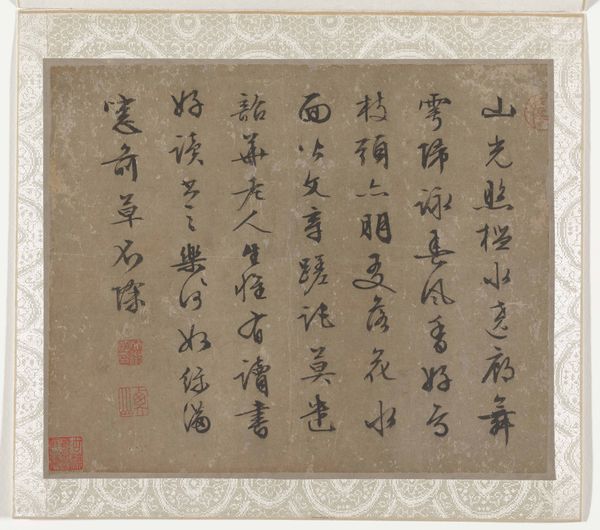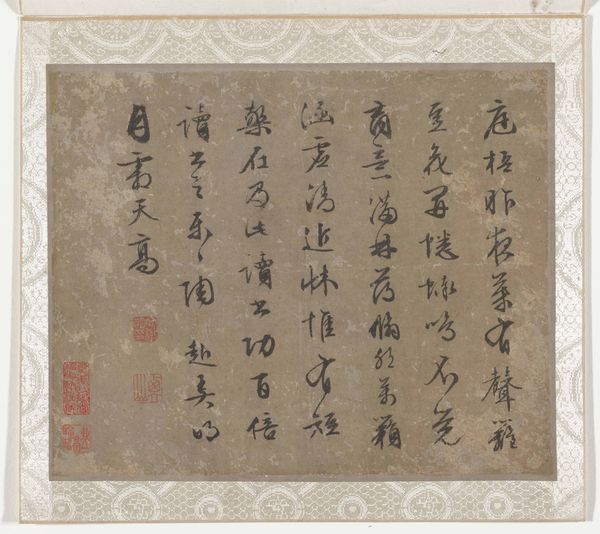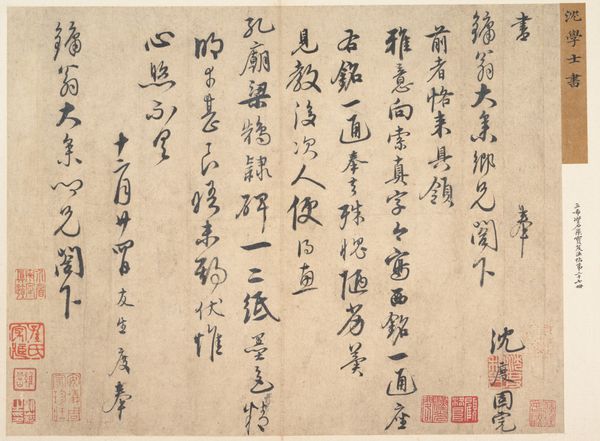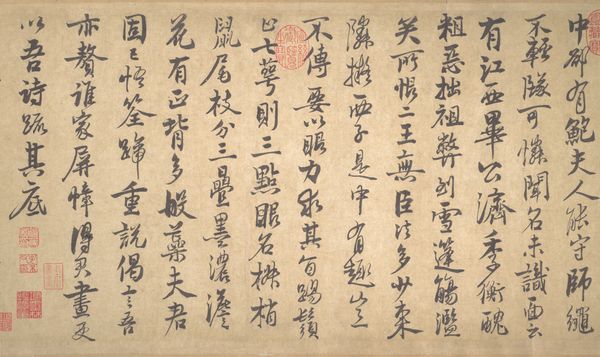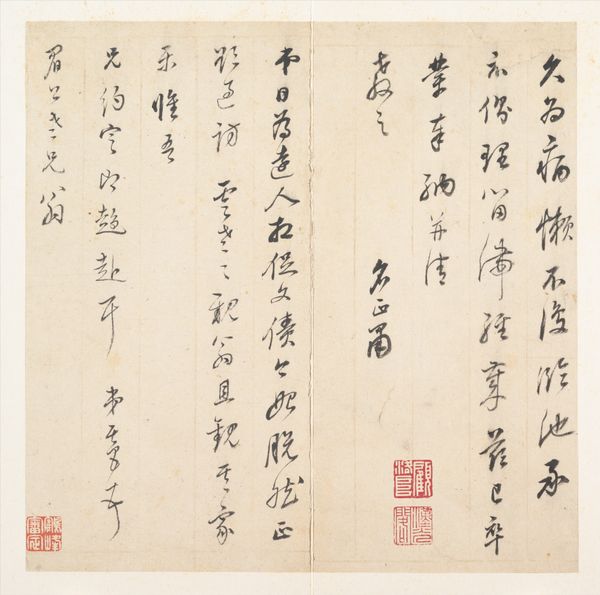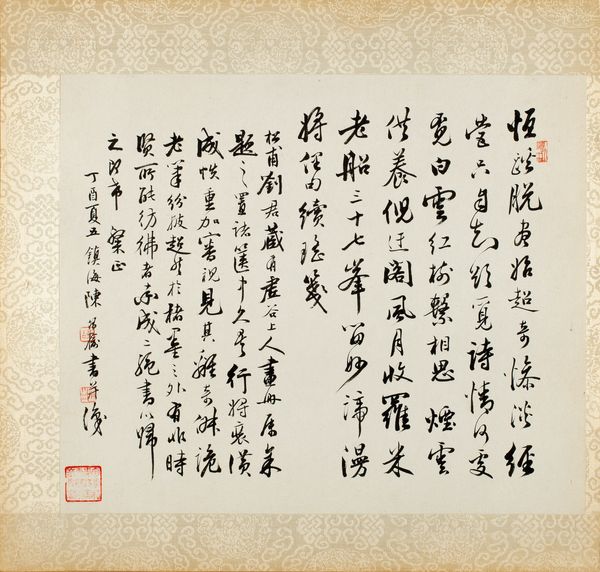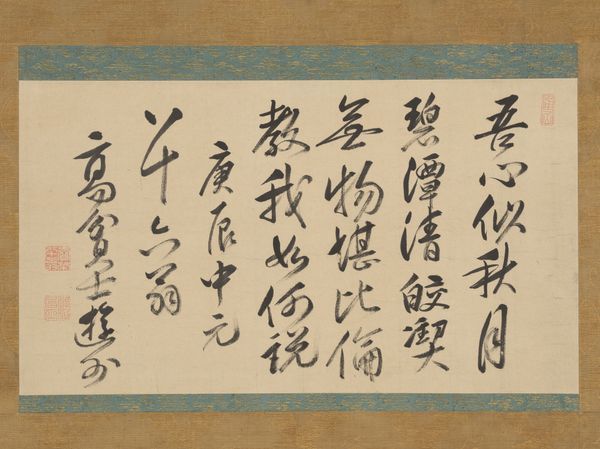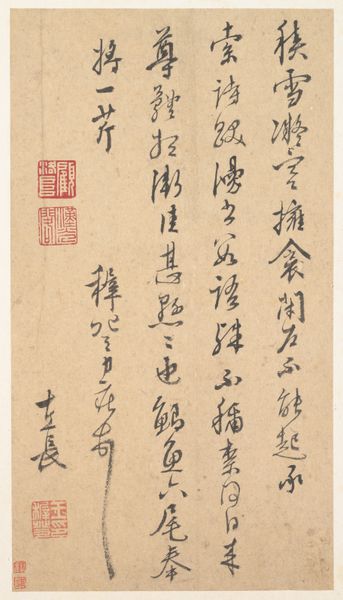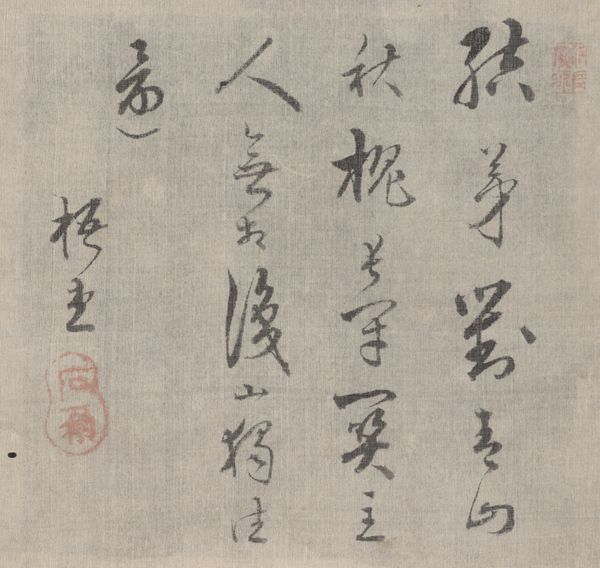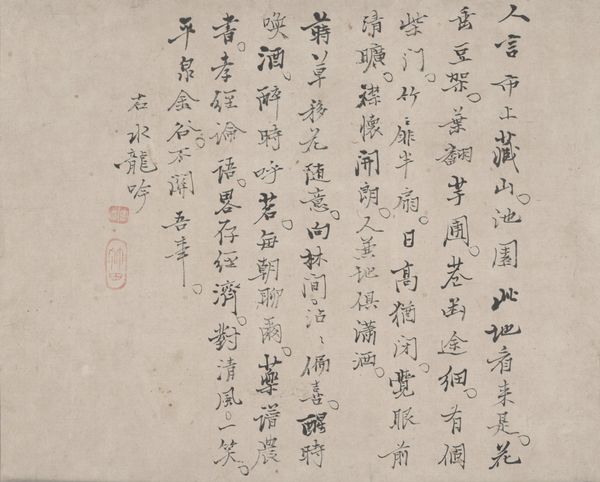
drawing, paper, ink-on-paper, ink
#
drawing
#
toned paper
#
asian-art
#
figuration
#
paper
#
ink-on-paper
#
ink
#
china
#
line
#
calligraphy
Dimensions: 10 7/16 × 12 1/4 in. (26.51 × 31.12 cm) (image)12 3/4 × 14 1/4 in. (32.39 × 36.2 cm) (mount, bottom half of mount, from fold downward)
Copyright: Public Domain
Editor: Here we have Weng Sen's poem in running script, crafted around the 16th century by Wen Zhengming. It’s rendered in ink on paper and possesses a subdued, contemplative aura. The characters seem to dance and flow. How would you interpret this work? Curator: It *is* a dance, isn’t it? Like a whispered conversation between brush and paper, capturing a fleeting moment of inspiration. To me, this piece embodies the literati ideal of expressing oneself through poetry, calligraphy, and painting—all interwoven. Imagine the artist, lost in thought, channeling Weng Sen's verses through his own hand. What feelings does the script itself evoke in you? Editor: I notice how the varying ink tones give the piece so much depth, even though it is essentially lines on paper. Curator: Exactly! It’s almost sculptural, wouldn't you say? The character shapes possess their own intrinsic energy, revealing much about the artist's frame of mind, wouldn't you agree? Are we merely witnessing calligraphic precision or an intimate glimpse into Wen Zhengming's world? Editor: It’s far more intimate, I think, knowing that this isn’t just copying, but deeply considered interpretation of Weng Sen’s verse. Curator: Precisely! And in this intersection, separated by time and space, we find a moment of shared artistic sensitivity, and an insight into Ming dynasty artistic life. Editor: Seeing it that way offers a fresh perspective. I appreciate the reminder that this piece speaks through various modes: intellectual, emotional, and artistic, all intertwined!
Comments
minneapolisinstituteofart almost 2 years ago
⋮
During the Ming period, members of the elite who gained fame for their calligraphy were often equally famous for their achievements in painting. Within elite society, calligraphy was equally admired as painting. It was viewed as quintessential yet functional, rather than as merely an independent visual art form or means of self-expression and cultivation. Many artists in the Ming dynasty were not only good at painting, but also excelled in composing poems and calligraphy. These three arts are known as the sanjue, or the “Three Perfections.” Both Wen Zhengming and Zhu Yunming are regarded as great masters with skills of the “Three Perfections.”
Join the conversation
Join millions of artists and users on Artera today and experience the ultimate creative platform.

